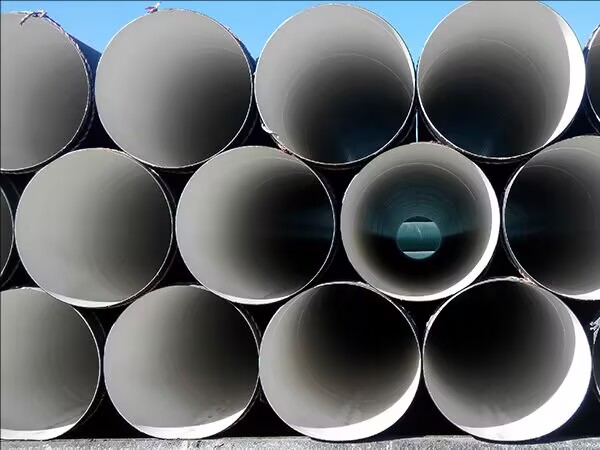Up to now, oil, natural gas, water slurry and other long transportation pipelines are generally made of
carbon steel pipes, but carbon steel pipes for a long time with oil, natural gas and other media are prone to corrosion, which will not only cause a huge waste of resources, but also bring safety risks to pipeline operation.
The epoxy coating on the inside of the steel pipe can effectively isolate the contact between the corrosive medium and the inside of the steel pipe, and reduce the corrosion inside the steel pipe.

What is internal epoxy coating?
Internal epoxy coating refers to the application of a layer of epoxy resin coating to the inner surface of the pipe or equipment to form a dense protective film. This coating is mainly used to prevent the corrosion of the transport medium (such as water, oil, chemical media, etc.) on the substrate, while also improving the hygiene of fluid transport and reducing friction resistance.
How to improve its adhesion?
Improving the adhesion of the internal epoxy coating mainly depends on optimizing the pretreatment of the substrate, selecting the appropriate coating system and strictly controlling the coating process, including:
1. Clean the surface of the substrate thoroughly
Mechanical cleaning: Using mechanical methods such as sanding, sandblasting or shot blasting to remove oil, rust, oxide and other impurities, increase surface roughness, form a tiny texture, which is conducive to the mechanical bite of the coating.
Chemical cleaning: Use pickling or alkali washing to remove residual pollutants, and then rinse and dry with water to ensure that the surface of the substrate is clean (note: the dosage should be strictly controlled during pickling or alkali washing to prevent excessive dosage from causing corrosion of the substrate).
2. Surface pretreatment
Physical pretreatment: The inner wall is roughened by sandblasting and other methods to improve the surface roughness of the substrate, thereby enhancing the adhesion of the epoxy coating.
Chemical pretreatment: Chemical conversion treatment (such as phosphating or passivation treatment) can be used to form a fine and dense chemical conversion film on the surface of the steel to further improve the chemical combination of the coating and the substrate.
3. Choose the right paint
Use an epoxy primer specifically designed for steel to ensure a good chemical and mechanical bond with steel. Adhesion accelerator such as silane coupling agent can also be added to the coating to improve the interface bond between the coating and the steel.
4. Control of environmental conditions
Before painting the steel pipe, it is necessary to ensure that the temperature and humidity of the steel pipe surface meet the coating requirements, and avoid construction in a wet or low temperature environment. Coating and curing in the appropriate environment to ensure that the coating is fully cross-linked and cured to achieve the best adhesion.
5. Process control
Control the thickness of the coating to ensure that each layer of coating is evenly covered and reaches the specified thickness to prevent the coating from falling off due to substandard coating thickness or uneven coating distribution.
When painting, each layer of coating should be fully dried to prevent poor bonding between layers.
Through the above measures, the adhesion of the internal epoxy coating can be effectively improved to ensure the stability and corrosion resistance of the coating during long-term service, thus extending the service life of the pipeline.
